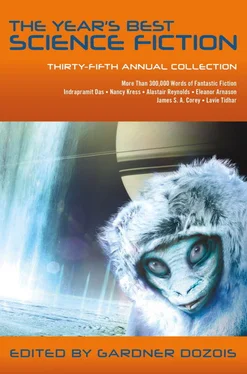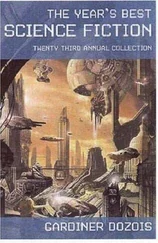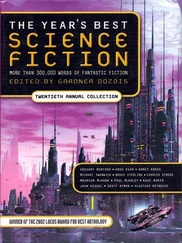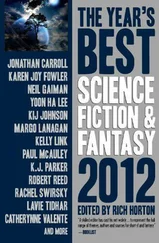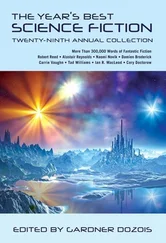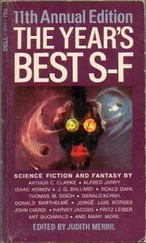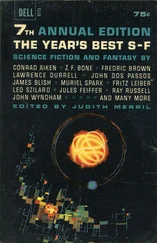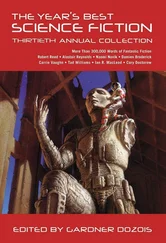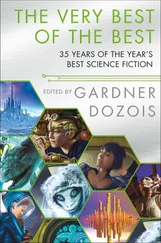Other sites of general interest include: Ansible ( news.ansible.co.uk/Ansible), the online version of multiple Hugo-winner David Langford’s long-running fanzine Ansible ; Book View Caf é ( www.bookviewcafe.com) is a “consortium of over twenty professional authors,” including Vonda N. McIntyre, Laura Ann Gilman, Sarah Zittel, Brenda Clough, and others, who have created a website where work by them—mostly reprints, and some novel excerpts—is made available for free.
Sites where podcasts and SF-oriented radio plays can be accessed have also proliferated in recent years: at Audible ( www.audible.com), Escape Pod ( www.escapepod.org, podcasting mostly SF), SF Squeecast ( sfsqueecast.com), The Coode Street Podcast ( jonathanstrahan.podbean.com), The Drabblecast ( www.drabblecast.org), StarShipSofa ( www.starshipsofa.com), Far Fetched Fables ( www.farfetchedfables.com), new companion to StarShipSofa , concentrating on fantasy, SF Signal Podcast ( www.sfsignal.com), Pseudopod ( www.pseudopod.org, podcasting mostly fantasy), Podcastle ( www.podcastle.org), podcasting mostly fantasy, and Galactic Suburbia ( galacticsuburbia.podbean.com). Clarkesworld routinely offers podcasts of stories from the ezine, and The Agony Column ( agonycolumn.com) also hosts a weekly podcast. There’s also a site that podcasts nonfiction interviews and reviews, Dragon Page Cover to Cover ( www.dragonpage.com).
Last year I mentioned that most of the stories I was seeing were of short-story length, with few long novelettes or novellas. Although perhaps most of this year’s stories were still of short-story length, this year saw a dramatic resurgence of novellas. By one count, there were more than eighty novellas published in the SF/fantasy/horror genres in 2017. Most of these were published as stand-alone chapbooks, and the ambitious new program from Tor.com Publishing can account for a lot of these chapbooks; there were also many released by a wide array of small presses, as Kickstarter projects, and in electronic formats. Industry stalwarts such as Asimov’s and Analog and F&SF continued to publish novellas as well, as they’ve always done, and even electronic magazines such as Clarkesworld , which had formerly had strict word limits, seem to be loosening up and increasing the length of stories that they’re willing to accept.
The odd result of this is that you have a lot of novellas on one end of the scale and a lot of short stories on the opposite end, with fewer novelettes in between. Perhaps, like the midlist in book publishing, novelettes are becoming marginalized. It’ll be interesting to see where this goes in the future.
There were a lot of original anthologies published in 2017. The SF anthologies divided up into two rough groups, the space opera/military SF anthologies (with the balance between the two forms varying from book to book), and the futurology anthologies, many of them with corporate or government sponsors, leading Jonathan Strahan to dub them “think-tank fiction.” The strongest original SF anthology of the year was Jonathan Strahan’s Infinity Wars (Solaris), ostensibly a collection of military SF, although in some ways it’s actually a kind of stealth antiwar anthology, with character after character wrestling with doubts about the morality of the war and the orders they’ve been given and whether or not they should comply with them and sicke of the slaughter involved, particularly of civilians. The best stories here are Indrapramit Das’s “The Moon is Not a Battlefield” and Nancy Kress’s “Dear Sarah,” although there are also strong stories by Eleanor Arnason, Peter Watts, Rich Larson, Carrie Vaughn, An Owomoyela, Elizabeth Bear, David D. Levine, E. J. Swift, and others.
In this grouping, the next two strongest anthologies are probably Nick Gever’s Extrasolar—Postscripts 38 (PS Publishing) and John Joseph Adams’s Cosmic Powers: The Saga Anthology of Far-Away Galaxies (Saga). Extrasolar’s premise is that its writers are going to take us on a “tour of the stars in our galactic neighborhood,” drawing on the knowledge about exotic stars and extrasolar planets derived from more than twenty years of observation by the Kepler telescope and other space telescopes, knowledge that paints a very different picture of what a solar system can be like than that which was gained by observing our own—and which has thrown new fuel on the fire of the debate about the Fermi paradox. As such, it fits a bit uneasily into the space opera/military SF grouping, although stories here by Alastair Reynolds, Aliette de Bodard, and others could easily be considered to be military SF. Best stories here, in addition to the above-mentioned Reynolds and de Bodard stories, are “Canoe,” by Nancy Kress and “The Residue of Fire,” by Robert Reed, although Extrasolar also featured strong work from Kathleen Ann Goonan, Jack McDevitt, Gregory Benford, Paul Di Filippo, Terry Dowling, Ian Watson, Lavie Tidhar, Ian R. MacLeod, and others. Cosmic Powers is much more of a space opera anthology, unsurprising in an anthology where the editor asked for stories in the spirit of the Marvel movie Guardians of the Galaxy —and that’s pretty much exactly what he got. The best stories here are “Zen and the Art of Starship Maintenance,” by Tobias S. Buckell, “The Dragon that Flew Out of the Sun,” by Aliette de Bodard, “Golden Ring,” by Karl Schroeder, “The Chameleon’s Gloves,” by Yoon Ha Lee, and “Diamond and the World Breaker,” by Linda Nagata, there’s also strong work here by Seanan McGuire, Charlie Jane Anders, and Kameron Hurley, as well as reprints by Vylar Kaftan, Caroline M. Yoachim ,and others. Bryan Thomas Schmidt’s Infinite Stars: The Definitive Anthology of Space Opera and Military SF (Titan) is the anthology in this grouping the most oriented toward military SF. A mixed original/reprint anthology, the best of the original stories here are Alastair Reynolds’s “Revolution Space: Night Passage” and Linda Nagata’s “Red: Region Five,” but there’s also good work here by Charles E. Gannon, David Weber, Jody Lynn Nye, David Drake, Jack Campbell, and Elizabeth Moon. Adding substantially to the value of Infinite Stars is a strong list of reprint stories by Poul Anderson, Cordwainer Smith, Leigh Brackett and Edmond Hamilton, Robert Silverberg, Lois McMaster Bujold, Larry Niven and Jerry Pournelle, Nnedi Okorafor, A. C. Crispin, and Anne McCaffrey,
Of the futurology/think tank anthologies (collections of near-future futurology stories dealing with technological change, often sponsored by writers assembled and commissioned for the task by some major corporation), the strongest was Visions, Ventures, Escape Velocities: A Collection of Space Futures (Arizona State University), edited by Ed Finn and Joey Eschrich, a mixed fiction/nonfiction anthology about space futures from Arizona State University, sponsored by the National Aeronautics and Space Administration, which featured strong stories by Carter Scholz, Madeline Ashby, Eileen Gunn, Vandana Singh, Ramez Naam, and Steven Barnes. Also strong is another mixed fiction/nonfiction anthology, Chasing Shadows: Visions of Our Coming Transparent World (Tor), edited by David Brin and Stephen W. Potts. Best of the original stories here are “Elephant on Table,” by Bruce Sterling, “First Presentation,” by Aliette de Bodard, and “Eminence,” by Karl Schroeder, but the anthology also features good work by Nancy Fulda, Jack Skillingstead, Gregory Benford, Cat Rambo, and Brenda Cooper. Good reprints in Chasing Shadows include work by Damon Knight, Robert Silverberg, Kathleen Ann Goonan, Vernor Vinge, William Gibson, Neal Stephenson, Brin himself, and others. Another fairly strong futurology anthology is Sunvault: Stories of Solarpunk and Eco-Speculation (Upper Rubber Boot), edited by Phoebe Wagner and Brontë Christopher Wieland. Sunvault features strong stories by Lavie Tidhar, A. C. Wise, Nisi Shawl, Jess Barber, and Tyler Young, as well as reprints by Daniel José Older and Nick Wood.
Читать дальше
